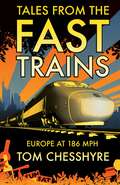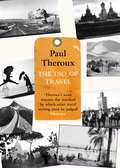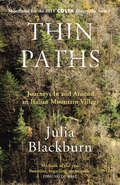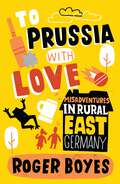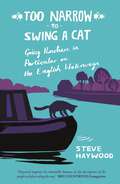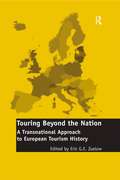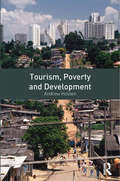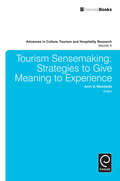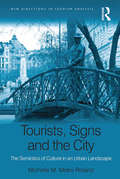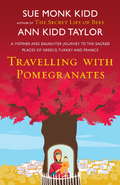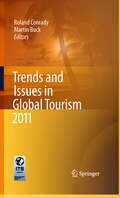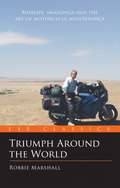- Table View
- List View
Super Sports Car (large print)
by RnibThis page shows an image of a side view of a red super sports car with the bonnet on the right and the boot on the left of the page. There is a locator dot shown, which will be at the top left of the page when the image is the correct way up. On the left of the page the rear light can be found in the centre left of the car. Up and right from this the roof slopes off very gently away from the wheel arch. It then slopes down gently. The shape runs smoothly into the sloping windscreen and on to the rounded bonnet. The car is very streamlined and low on the ground. There is a large wheel with spokes to the bottom right and left of the image. Between the wheels is the door with a curved triangular window. In the bottom right of the window is a wing mirror sticking out towards you. To the right of the mirror is the side of the windscreen. A long shape which narrows to the right overlaps the bottom left of the door. This is a curved indent in the car so the bottom of the door curves in. It gets deeper to the left where there is an opening into the centrally positioned engine. This provides air to the engine for combustion.The engine is big for a small car meaning it will be very fast. It will also be very expensive.
Super Sports Car (UEB contracted)
by RnibThis page shows an image of a side view of a red super sports car with the bonnet on the right and the boot on the left of the page. There is a locator dot shown, which will be at the top left of the page when the image is the correct way up. On the left of the page the rear light can be found in the centre left of the car. Up and right from this the roof slopes off very gently away from the wheel arch. It then slopes down gently. The shape runs smoothly into the sloping windscreen and on to the rounded bonnet. The car is very streamlined and low on the ground. There is a large wheel with spokes to the bottom right and left of the image. Between the wheels is the door with a curved triangular window. In the bottom right of the window is a wing mirror sticking out towards you. To the right of the mirror is the side of the windscreen. A long shape which narrows to the right overlaps the bottom left of the door. This is a curved indent in the car so the bottom of the door curves in. It gets deeper to the left where there is an opening into the centrally positioned engine. This provides air to the engine for combustion. The engine is big for a small car meaning it will be very fast. It will also be very expensive.
Super Sports Car (UEB uncontracted)
by RnibThis page shows an image of a side view of a red super sports car with the bonnet on the right and the boot on the left of the page. There is a locator dot shown, which will be at the top left of the page when the image is the correct way up. On the left of the page the rear light can be found in the centre left of the car. Up and right from this the roof slopes off very gently away from the wheel arch. It then slopes down gently. The shape runs smoothly into the sloping windscreen and on to the rounded bonnet. The car is very streamlined and low on the ground. There is a large wheel with spokes to the bottom right and left of the image. Between the wheels is the door with a curved triangular window. In the bottom right of the window is a wing mirror sticking out towards you. To the right of the mirror is the side of the windscreen. A long shape which narrows to the right overlaps the bottom left of the door. This is a curved indent in the car so the bottom of the door curves in. It gets deeper to the left where there is an opening into the centrally positioned engine. This provides air to the engine for combustion. The engine is big for a small car meaning it will be very fast. It will also be very expensive.
Supermarine Spitfire (large print)
by RnibThis page shows two images of an aircraft. At the top of the page seen from the side and in the bottom and middle of the page a plan view seen from above. There is a locator dot shown, which will be at the top left of the page when the image is the correct way up. Both views have the front on the left and the tail on the right of the page. The aircraft is shown in a flying position so the wheels are retracted and not shown. The aircraft in the top of the page has the propeller on the left with one blade pointing up and one pointing down. The nose cone is pale grey. Right from this is a rectangle which comprises six exhaust outlets. Down and right from the exhaust is the tip of the wing pointing towards you. The front edge on the left has a cannon sticking out. Up from the wing in the middle top of the fuselage is the cockpit cover shown as two windows. The centre of the fuselage has letters identifying which individual aircraft it is. There is also red and blue roundel indicating the plane belongs to the RAF. On the top edge of the fuselage there is an aerial sticking up. Right of this the fuselage continues to the vertical tail fin on the right. At base of the fin is the end of one of the tail wings. Right of this is a vertical flap. This is one of the ailerons used to manoeuvre the aircraft when it is flying. The tail has a red rectangle and a blue rectangle separated by a white line indicating the plane belongs to the RAF. In the plan view image in the bottom and middle of the page the fuselage goes from left to right in the centre of the image. The main wings go up and down the page from the fuselage. In the left of the page the propeller has one blade pointing up and one pointing down. The tip of the nose cone is pale grey. To the right of the propeller six exhaust outlets can be found on the top and bottom edge of the fuselage. Right of this are the wings. Each wing has two cannons mounted on the front edge. In the centre of each wing there is a red and blue roundel indicating the plane belongs to the RAF. On the right of each wing tip is a flap. These are two of the ailerons used to manoeuvre the aircraft when it is flying. In the centre of the fuselage between the wings is the cockpit shown as two windows. The fuselage continues to the right ending in the tailplane. On the right of each tail wing is a flap. These are two more of the ailerons used to manoeuvre the aircraft when it is flying.
Supermarine Spitfire (UEB contracted)
by RnibThis page shows two images of an aircraft. At the top of the page seen from the side and in the bottom and middle of the page a plan view seen from above. There is a locator dot shown, which will be at the top left of the page when the image is the correct way up. Both views have the front on the left and the tail on the right of the page. The aircraft is shown in a flying position so the wheels are retracted and not shown. The aircraft in the top of the page has the propeller on the left with one blade pointing up and one pointing down. The nose cone is pale grey. Right from this is a rectangle which comprises six exhaust outlets. Down and right from the exhaust is the tip of the wing pointing towards you. The front edge on the left has a cannon sticking out. Up from the wing in the middle top of the fuselage is the cockpit cover shown as two windows. The centre of the fuselage has letters identifying which individual aircraft it is. There is also red and blue roundel indicating the plane belongs to the RAF. On the top edge of the fuselage there is an aerial sticking up. Right of this the fuselage continues to the vertical tail fin on the right. At base of the fin is the end of one of the tail wings. Right of this is a vertical flap. This is one of the ailerons used to manoeuvre the aircraft when it is flying. The tail has a red rectangle and a blue rectangle separated by a white line indicating the plane belongs to the RAF. In the plan view image in the bottom and middle of the page the fuselage goes from left to right in the centre of the image. The main wings go up and down the page from the fuselage. In the left of the page the propeller has one blade pointing up and one pointing down. The tip of the nose cone is pale grey. To the right of the propeller six exhaust outlets can be found on the top and bottom edge of the fuselage. Right of this are the wings. Each wing has two cannons mounted on the front edge. In the centre of each wing there is a red and blue roundel indicating the plane belongs to the RAF. On the right of each wing tip is a flap. These are two of the ailerons used to manoeuvre the aircraft when it is flying. In the centre of the fuselage between the wings is the cockpit shown as two windows. The fuselage continues to the right ending in the tailplane. On the right of each tail wing is a flap. These are two more of the ailerons used to manoeuvre the aircraft when it is flying.
Supermarine Spitfire (UEB uncontracted)
by RnibThis page shows two images of an aircraft. At the top of the page seen from the side and in the bottom and middle of the page a plan view seen from above. There is a locator dot shown, which will be at the top left of the page when the image is the correct way up. Both views have the front on the left and the tail on the right of the page. The aircraft is shown in a flying position so the wheels are retracted and not shown. The aircraft in the top of the page has the propeller on the left with one blade pointing up and one pointing down. The nose cone is pale grey. Right from this is a rectangle which comprises six exhaust outlets. Down and right from the exhaust is the tip of the wing pointing towards you. The front edge on the left has a cannon sticking out. Up from the wing in the middle top of the fuselage is the cockpit cover shown as two windows. The centre of the fuselage has letters identifying which individual aircraft it is. There is also red and blue roundel indicating the plane belongs to the RAF. On the top edge of the fuselage there is an aerial sticking up. Right of this the fuselage continues to the vertical tail fin on the right. At base of the fin is the end of one of the tail wings. Right of this is a vertical flap. This is one of the ailerons used to manoeuvre the aircraft when it is flying. The tail has a red rectangle and a blue rectangle separated by a white line indicating the plane belongs to the RAF. In the plan view image in the bottom and middle of the page the fuselage goes from left to right in the centre of the image. The main wings go up and down the page from the fuselage. In the left of the page the propeller has one blade pointing up and one pointing down. The tip of the nose cone is pale grey. To the right of the propeller six exhaust outlets can be found on the top and bottom edge of the fuselage. Right of this are the wings. Each wing has two cannons mounted on the front edge. In the centre of each wing there is a red and blue roundel indicating the plane belongs to the RAF. On the right of each wing tip is a flap. These are two of the ailerons used to manoeuvre the aircraft when it is flying. In the centre of the fuselage between the wings is the cockpit shown as two windows. The fuselage continues to the right ending in the tailplane. On the right of each tail wing is a flap. These are two more of the ailerons used to manoeuvre the aircraft when it is flying.
Survivor: The Autobiography (Brief Histories Ser.)
by Jon E. LewisThis collection of classic tales comprises over 50 accounts of true-life adventure taken from contemporary memoirs, letters and journals. They span the years 1800 to the end of the 20th century, in a period which can be termed the modern age of exploration. Inspired by Ernest Shackleton's 1914-15 escape from the bitter clutches of Antarctica, this book is by turn inspirational, harrowing, tragic and unimaginable. It recounts stories of ordinary mortals who achieved extraordinary things. From the ice-locked poles and endless deserts of Arabia to the storm-tossed South Atlantic, the rainforests of the Amazon and sheer peaks of the Himalayas, the world's most famous adventurers recount their experiences.Includes accounts from some of the greatest ever explorers and adventurers: Captain Scott, Ernest Shackleton; John Franklin, Edmund Hilary, Laurens Van der Post, Thor Heyerdahl, John Blashford-Snell, Ranulp Fiennes, Chay Blyth, Jacques Cousteau, Nick Danziger,; Charles Lindbergh, Peter Fleming and many more.
Tales from the Fast Trains: Around Europe at 186mph
by Tom ChesshyreTired of airport queues and delays, Tom Chesshyre embarks on a series of high-speed adventures across the Continent on its fast trains instead. He travels to places that wouldn’t feature on a standard holiday wish-list and discovers the hidden delights of mysterious Luxembourg, super-trendy Rotterdam and much-maligned Frankfurt.
The Tao of Travel: Enlightenments From Lives On The Road
by Paul TherouxPaul Theroux celebrates fifty years of wandering the globe by collecting the best writing on travel from the books that shaped him, as a reader and a traveller. Part philosophical guide, part miscellany, part reminiscence, The Tao of Travel enumerates 'The Contents of Some Travellers' Bags' and exposes 'Writers Who Wrote About Places They Never Visited'; tracks extreme journeys in 'Travel As An Ordeal' and highlights some of 'Travellers' Favourite Places'. Excerpts from the best of Theroux's own work are interspersed with selections from travellers both familiar and unexpected, including Vladimir Nabokov, Henry David Thoreau, Graham Greene, Ernest Hemingway and more. The Tao of Travel is a unique tribute to the pleasures and pains of travel in its golden age.
Tea Clipper, 1865 AD (large print)
by RnibIn this image of a tea clipper, the long slim hull extends across the lower part of the page, with its stern at the left and bow at the right. There is a locator dot shown, which will be at the top left of the page when the image is the right way up. At the stern, mainly below the water level, is the rudder. Slightly to the right and up the page from this is the mizzen mast, the shortest of three tall masts which rise from the clipper's hull. Each of the masts - the mizzen, main and foremast from left to right - are rigged with many rectangular sails attached to horizontal wooden spars. Three ropes to the right of the page support triangular sails which are tethered between the foremast and the bowsprit, which sticks out almost horizontally at the very right of the page. The anchor can be seen stored against the hull just above the water level at the bow. A clipper could have additional triangular sails strung between the masts. It was designed to be a very fast cargo ship.
Thin Paths: Journeys in and around an Italian Mountain Village
by Julia BlackburnShortlisted for the 2011 Costa Biography Award and the 2012 Royal Society of Literature Ondaatje Prize Julia Blackburn and her husband moved to a little house in the mountains of northern Italy in 1999. She arrived as a stranger but a series of events brought her close to the old people of the village and they began to tell her their stories. Of how their village had been trapped in an archaic feudal system and owned by a local padrone who demanded his share of all they had, of the eruption of the Second World War, of the conflict between the fascists and the partisans, of death and fear and hunger of how they hid like like foxes in the mountains. 'Write it down for us,' they said, 'because otherwise it will all be lost.' Thin Paths is a celebration of the songlines of one place that could be many places and a celebration of the humour and determination of the human spirit.
To Prussia With Love: Misadventures in Rural East Germany
by Roger BoyesIn a desperate attempt to save his relationship with girlfriend Lena and take a break from the world of journalism, Roger Boyes agrees to leave Berlin for deepest, darkest Brandenburg and decides to set up a B&B in a run-down old schloss that Lena has inherited. Farce meets romance in this follow-up to the successful A Year in the Scheisse.
Too Narrow to Swing a Cat: Going Nowhere in Particular on the English Waterways
by Steve HaywoodSteve has a new member of crew aboard his narrowboat – but maybe not the kind he’d have wanted if he’d known the trouble she’d cause. Kit, an untidy bundle of feline fur, joins him on a mission to discover lost parts of England, cruising the canals and visiting picturesque towns and waterway festivals along the way.
Touring Beyond the Nation: A Transnational Approach to European Tourism History
by Eric G.E. ZuelowWhen tourists travel, they often seek the exotic. The farther they venture, the more unique the cultures they gaze upon, the greater the prestige accrued; cross-cultural contact is commonplace. Yet despite the obviously transnational character of the tourist experience, national borders define existing studies of tourism. Spanish, French, or German tourism is treated almost in isolation and there are only hints of a larger transnational impetus behind the creation of national tourism products. This volume tells a different story. Although modern tourism first evolved in Europe changes were never confined to national borders. The Grand Tour, the birthplace of modern tourism, was consummately transnational in both its execution and its influence. Although seaside resorts originated in Britain, the aesthetic and scientific ideas that made beaches desirable emerged through conversation among Dutch painters, English travellers, and both British and Continental scientists and philosophers. When travel was finally available to the masses, Irish tourism advocates looked to England, Continental Europe, and America for ideas. The Nazi leisure organization, Strength through Joy (KdF), was based on an earlier Italian model, the Dopolavoro. World's Fair promoters raided previous fairs in other countries for ideas. European-wide demand and taste helped shape nudist practice in France and beyond. At every turn, practices and products developed because tourism lent itself to trans-national discourse. The contributors examine a wide range of topics that together make a powerful argument for the adoption of a new transnational model for understanding modern tourism. An essential addition to the library of academics studying the history of tourism, popular culture and leisure in Europe, the book will also provide interest to scholars of transnational topics, including Europeanization and globalization.
Touring Beyond the Nation: A Transnational Approach to European Tourism History
by Eric G. E. ZuelowWhen tourists travel, they often seek the exotic. The farther they venture, the more unique the cultures they gaze upon, the greater the prestige accrued; cross-cultural contact is commonplace. Yet despite the obviously transnational character of the tourist experience, national borders define existing studies of tourism. Spanish, French, or German tourism is treated almost in isolation and there are only hints of a larger transnational impetus behind the creation of national tourism products. This volume tells a different story. Although modern tourism first evolved in Europe changes were never confined to national borders. The Grand Tour, the birthplace of modern tourism, was consummately transnational in both its execution and its influence. Although seaside resorts originated in Britain, the aesthetic and scientific ideas that made beaches desirable emerged through conversation among Dutch painters, English travellers, and both British and Continental scientists and philosophers. When travel was finally available to the masses, Irish tourism advocates looked to England, Continental Europe, and America for ideas. The Nazi leisure organization, Strength through Joy (KdF), was based on an earlier Italian model, the Dopolavoro. World's Fair promoters raided previous fairs in other countries for ideas. European-wide demand and taste helped shape nudist practice in France and beyond. At every turn, practices and products developed because tourism lent itself to trans-national discourse. The contributors examine a wide range of topics that together make a powerful argument for the adoption of a new transnational model for understanding modern tourism. An essential addition to the library of academics studying the history of tourism, popular culture and leisure in Europe, the book will also provide interest to scholars of transnational topics, including Europeanization and globalization.
Tourism, Poverty and Development
by Andrew HoldenPoverty alleviation is high on the global policy agenda, its importance being emphasised by its place as the first of the United Nation’s Millennium Development Goals. As a potentially significant source of economic growth in developing countries, tourism may also play a major role in poverty reduction and alleviation under the right circumstances. The incorporation of tourism into development policy and Poverty Reduction Strategies has special poignancy for those Least Developed Countries where natural resources exist to support a tourism industry and there are limited development alternatives. This book offers a holistic, explicit and detailed introduction to the relationship of poverty and tourism within the context of developing countries. The book is divided into distinct sections, progressing from an evaluation of the key concepts of poverty, tourism and development; to the causal factors of poverty; to the mechanisms of how tourism is being implemented in policy and practice to reduce poverty and finally to an analysis of the relationship between tourism to poverty alleviation in the future. The adopted analytical approach of the key themes is multi-disciplinary, incorporating tourism studies, human geography, political economy, economics, development and environmental studies. It integrates examples and original case studies from varying geographical developing regions including Africa, South Asian and East Asia and the Pacific, to lend practical insights into tourism’s role in poverty alleviation. The text will be of particular interest to higher education students from tourism studies, geography, political economy, environmental and development studies, and sociology backgrounds. It will also be of relevance to government and policy makers, alongside those who have a more general interest in poverty alleviation.
Tourism, Poverty and Development
by Andrew HoldenPoverty alleviation is high on the global policy agenda, its importance being emphasised by its place as the first of the United Nation’s Millennium Development Goals. As a potentially significant source of economic growth in developing countries, tourism may also play a major role in poverty reduction and alleviation under the right circumstances. The incorporation of tourism into development policy and Poverty Reduction Strategies has special poignancy for those Least Developed Countries where natural resources exist to support a tourism industry and there are limited development alternatives. This book offers a holistic, explicit and detailed introduction to the relationship of poverty and tourism within the context of developing countries. The book is divided into distinct sections, progressing from an evaluation of the key concepts of poverty, tourism and development; to the causal factors of poverty; to the mechanisms of how tourism is being implemented in policy and practice to reduce poverty and finally to an analysis of the relationship between tourism to poverty alleviation in the future. The adopted analytical approach of the key themes is multi-disciplinary, incorporating tourism studies, human geography, political economy, economics, development and environmental studies. It integrates examples and original case studies from varying geographical developing regions including Africa, South Asian and East Asia and the Pacific, to lend practical insights into tourism’s role in poverty alleviation. The text will be of particular interest to higher education students from tourism studies, geography, political economy, environmental and development studies, and sociology backgrounds. It will also be of relevance to government and policy makers, alongside those who have a more general interest in poverty alleviation.
Tourism Sensemaking: Strategies to Give Meaning to Experience (Advances in Culture, Tourism and Hospitality Research #5)
by Arch G. WoodsideAccurate and useful assessment of tourism market opportunities, network behavior, and tourism destination management performance requires solid foundations in performance evaluation theory as well as applying metrics covering both sensemaking contexts and outcomes. "Advances in Culture, Tourism and Hospitality Research" seeks to advance knowledge and sense-making skills in interpreting cultural, organizational, and personal influences relating to tourism and hospitality behaviors. The ten papers in this volume make explicit current tourism assessment practices and look at how such assessments are being conducted and how to go about accomplishing prescribing and applying advanced assessment metrics. With a multi-regional focus that includes Asia, Europe, and North American this volume examines a variety of topics including: using importance-performance analysis to discern cultural differences in image perceptions with application to international visitors to Mauritius; network analysis methods for modelling tourism inter-organizational systems; and, tools for overcoming continuing bad performance in tourism destination management.
A Tourist in Africa
by Evelyn WaughIn this brilliant travel diary Evelyn Waugh captures a portrait of Africa and the Levant as it was emerging from the shadow of WW II and into the post- colonial order. He reports on Port Said, Aden, Kenya, Mt. Kilimanjaro, Tanganyika, Rhodesia, Mozambique, Bechuanaland and South Africa. Waugh was no defender of the established order, but nor did he succumb to hype, either. He knew the emergers were going to get something far different from what they expected.
Tourists, Signs and the City: The Semiotics of Culture in an Urban Landscape (New Directions in Tourism Analysis)
by Michelle M. Metro-RolandDrawing upon the literature of landscape geography, tourism studies, cultural studies, visual studies and philosophy, this book offers a multi-disciplinary approach to understanding the interaction between urban environments and tourists. This is a necessary prerequisite for cities as they make themselves into enticing destinations and compete for tourists' attention. It argues that tourists make sense of, and draw meaningful conclusions about, the places in which they tour based upon the interpretation of the signs or elements encountered within the built environment, elements such as graffiti and lamp posts. The writings of the American pragmatist Charles S. Peirce on interpretation provide the theoretical model for explaining the way in which mind and world, or thoughts and objects, result in tourists interacting with place. This theoretical framework elucidates three applied studies undertaken with foreign visitors to the Hungarian capital of Budapest. Based upon extensive ethnographic field work, these studies focus on tourists' interpretation of the urban landscape, with particular attention paid to the encounters with national culture, the role of architecture and the importance of the prosaic in urban tourism.
Tourists, Signs and the City: The Semiotics of Culture in an Urban Landscape (New Directions in Tourism Analysis)
by Michelle M. Metro-RolandDrawing upon the literature of landscape geography, tourism studies, cultural studies, visual studies and philosophy, this book offers a multi-disciplinary approach to understanding the interaction between urban environments and tourists. This is a necessary prerequisite for cities as they make themselves into enticing destinations and compete for tourists' attention. It argues that tourists make sense of, and draw meaningful conclusions about, the places in which they tour based upon the interpretation of the signs or elements encountered within the built environment, elements such as graffiti and lamp posts. The writings of the American pragmatist Charles S. Peirce on interpretation provide the theoretical model for explaining the way in which mind and world, or thoughts and objects, result in tourists interacting with place. This theoretical framework elucidates three applied studies undertaken with foreign visitors to the Hungarian capital of Budapest. Based upon extensive ethnographic field work, these studies focus on tourists' interpretation of the urban landscape, with particular attention paid to the encounters with national culture, the role of architecture and the importance of the prosaic in urban tourism.
Tractor and Trailer (tactile)
by Adrian FarnsworthThis is an image of a side view of a tractor and trailer. The tractor is on the left of the page and the trailer is on the right. The tractor faces left with a small front wheel on the left and a large rear wheel in the centre of the page. A funnel sticks up and the cab is to the right of this. The trailer is attached to the back of the tractor. It only has one wheel showing.
Travelling with Pomegranates: A Mother-daughter Story
by Sue Monk Kidd Ann Kidd TaylorTRAVELLING WITH POMEGRANATES is a touching and perceptive memoir about mothers and daughters that will resonate with women of all ages. From Sue Monk Kidd, the New York Times bestselling author of THE SECRET LIFE OF BEES and THE INVENTION OF WINGS ,and her daughter Ann Kidd Taylor. Sue Monk Kidd and her daughter Ann chronicle their travels together at a time when each had reached an important turning point in her life. What emerged was a quest for Ann and Sue to redefine themselves and also rediscover one other. Against the backdrop of the sacred sites of Greece, Turkey and France, Sue grapples with the problem of how to expand her vision of swarming bees into the novel that she feels compelled to write, whilst newly raduated Ann ponders the classic question of what to do with her life.
Trends and Issues in Global Tourism 2011 (Trends and Issues in Global Tourism)
by Roland Conrady Martin BuckThis book provides insights into important trends and future scenarios in the global tourism and travel industry. It analyses today’s challenges in the aviation and hospitality industry, in destination management, and in marketing and distribution management. New empirical data on general travel behaviour and the latest consumer trends are also presented. The contributors to this book are well-known individuals from important tourism, travel and consulting firms (e.g. BCD Travel, Öger Tours, Booz and Company, GfK, IPK International) and researchers from universities in Switzerland, United Kingdom, the Netherlands, and Germany. In addition institutes specializing in future research highlight important travel trends. Corporate social responsibility is one of the top themes to-be and therefore a focus of this book, offering insights into the concept of CSR, empirical data on consumer requests, corporate strategy issues and financial investment implications.
Triumph Around the World: An Eye Classic (Eye Classics)
by Robbie MarshallRobbie Marshall had it all - love, children and a successful business. So why did he trade it all in for the saddle of a Triumph Trophy and an out-of-date world atlas? Robbie knew that if he did not indulge his desire to explore, he would regret it for the rest of his life. After shipping his Triumph motorbike to the United States, Robbie kick-started his life on a journey that would take him across five continents and around the globe. Despite witnessing a gangland execution, sleeping rough, getting imprisoned and mugged, Robbie had the time of his life. Triumph Around the World is one hell of a ride.


